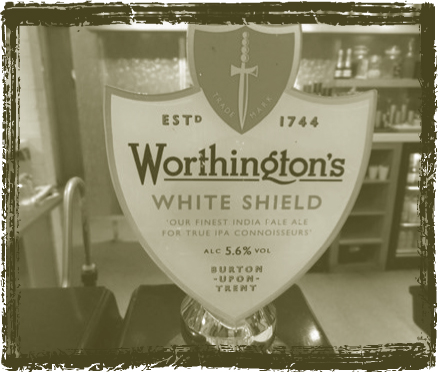
An authentic whiff of the past can be found in Worthington’s English-style White Shield.
Despite its name, India pale ale (or the much more common “IPA”) was never brewed in India. Nor was it consumed by Indians. Instead, it was brewed by the British for the British—first for those managing affairs in the colonies, and later for those enchanted by the idea of a beer with such an exotic provenance. In its first act, India pale ale was originally a strong, hoppy, elegant beer able to survive long-distance travel, as well as thrill English palates. But in the long decades of the twentieth century that constituted its second act, the style lived a degraded existence. It became just another bitter.
But that was not the last act.
In a final trick of export, IPAs came to America to be brewed by start-up craft breweries that found it offered a perfect template for local hops. Now it is one of the two most popular craft-brewed styles and nearly synonymous with craft brewing itself. The exporting continues; IPAs have spread to breweries across the globe in what has become the first international hit since pilsners managed the trick more than a century and a half ago. ■

An authentic whiff of the past can be found in Worthington’s English-style White Shield.
THE BRITISH BEGAN exporting beer almost as soon as they had colonies to which to export it. Shipments to North America and across the Baltic Sea went without a hitch—the cool waters ensured the beer made the journey in relatively good condition. But getting beer across the equator and around the horn of Africa to colonists living in India was a different matter. The first subcontinental shipments, which started arriving as early as 1711, included standard ales sold in London; none were specially brewed to endure the journey. Over the course of the century, records show that porter, pale ales, and table beer were all shipped to India.
Much of the beer that arrived was not fit to drink, and accounts describe some batches being dumped at arrival. There was just no way to mitigate the violence to which casks of live ale were subjected. As ships set out, the temperature of the North Atlantic was between 50° and 55°F—perfect cellaring temperature for beer down in the hull. But then sea temperatures rose to a tropical 80°F as ships passed the equator, dipped back to the upper sixties, and rose again to the mid-eighties by the time the boats reached India. All along that four-month ride, the ships rolled and bucked, keeping the beer at a constant froth. Of equal note: British beers of the era were all infected with Brettanomyces, a wild yeast resident in the wood of the casks. Wild yeasts can destroy a beer, effectively turning it to vinegar, and brewers compensated for its effects by keeping temperatures low or releasing beers fresh—neither of which was possible with ale shipped to India.
After decades of trial and error, breweries discovered that huge infusions of bacteria-inhibiting hops gave the beer at least a reasonable shot at potability when it arrived in the East. By the 1760s, brewers were being advised it was “absolutely necessary” to use more hops for their Indian beers. Finally, by the 1790s, George Hodgson’s Bow Brewery, east of London, began to find success with its heavily hopped pale ale; as a result, shipments to India grew tenfold. Yet for a beer with such renown, it’s surprising to learn that the Indian market was never much more than a blip. Even at its height, India was receiving around 10,000 barrels of beer annually—just one-sixth the amount shipped to North America, and one-tenth the annual production of a single brewery at the time, England’s Whitbread.
Burton Ale. Long before they became famous for sending pale ales to India, the breweries of Burton upon Trent were known for a thick brown beer they sent to the Baltics. The style took its name from its place of origin: Burton ale. The earliest versions, from the eighteenth century, were massive brews, heavy and viscous as honey. In 1822, however, the Russian government put a hefty tax on imported goods and the export Burton market suddenly died out. The breweries had to scramble to sell their signature product in Britain.
To appeal to locals, Burton ale brewers lightened their ale both in color and body and added hops. Even so, it was still a heavy beer and a hard sell. After a rocky start, the brewers realized that with a little age, Burton could become far more saleable; it was warming and comforting—and at more than 8% alcohol, quite strong, too. In the period of its popularity, Burton was strong but sweet and heavy with lots of unfermented sugars. Its tendency toward treacle was balanced by a stiff dose of hops, but this merely kept Burton from cloying. Thanks to wars and changing tastes, Burton gradually disappeared and now none are brewed under that name. A few beers matching its description are brewed, however—call them “disguised Burtons”—the best example of which is Fuller’s 1845.
Based on those numbers, IPA should have merited no more than a footnote in the annals of brewing history before fading into obscurity—it was, after all, essentially just a strong, hoppy pale ale. But in 1820, English breweries started marketing a variety of beer back home of the same type that was “prepared for the India market.” By the 1840s, breweries were calling it India pale ale and marketing it as a special treat. They played on the romance of the British Raj, elevating the style to one of elegance and adventure. One brewery even touted IPAs as the beer of “the gentry.” It was a commercial hit, and this is when the style was truly born. India pale ales never sold well in India, but they became standards in England.
IPA has remained one of the most durable of styles, and versions have been brewed consistently in both Britain and North America since. Strength and hoppiness have waxed and waned, but the name—and the legend—have allowed the style to survive (and lately, flourish). ■
The Hodgson Dilemma. Among brewing historians (yes, there are such people) rages a debate: Did George Hodgson invent India pale ale to survive the four-month journey to India? In many books, he gets the credit. And indeed, Hodgson’s Bow Brewery did come to dominate the Indian market in the early decades of the 1800s. But there are holes in the story: Beer, including pale ales, had been sent to India for decades before Hodgson. For a generation before him, brewers had known that high hop rates were critical to the survival of beers being shipped to warm climates. Unfortunately, the record is incomplete. What we know is that Hodgson could have invented IPA—though likely he was just the man who turned the information into gold—golden, hoppy ale.
AS INDIA PALE ales have evolved, two branches have grown from the family tree—the British and the North American cousins. British IPAs, like Fuller’s Bengal Lancer, are relatively modest beers—usually around 5% alcohol, with characterful if only moderate hopping. The American versions, like Bell’s Two Hearted Ale, Sierra Nevada Torpedo, and New Belgium’s Ranger, are stronger (6 to 7% ABV) and highlight intense hop aroma and bitterness. In England, India pale ale is a niche style; in the U.S., it is a mainstay.
In America, India pale ales are a showcase for hops; all beers use them, of course, but in IPAs hops are the point. This quality is immediately evident in the nose, which will be fragrant with citrus, pine, or flowers, depending on the variety. Generous additions throughout the brewing process create beers with a saturated green character, extending from the nose through to the sharp, bitter finish. In IPAs, malts are designed only to add a touch of color and a bit of sweetness to draw out the flavor from the hops. Fruit notes are typical, such as grapefruit, tangerine, or apricot.
Twenty years ago, brewers inspired by the great journey the original IPAs took would occasionally add oak chips to fermenters to extract tannins like the original beers drew from English oak hogsheads. This affectation died out as IPAs became more established in the market, but some breweries have begun aging their beer in actual oak casks, thereby adding tannins and vanilla to the palate. Whether aged on oak or not—the great majority aren’t—a good American IPA will be lively and invigorating, saturated in bright, hoppy flavors but not punishingly bitter or too heavy from either malt or alcohol. For many Americans, these qualities have come to define craft beer.
Whereas American IPAs focus on hop intensity, in Britain hopping does not come at the sacrifice of malt complexity. Typical British IPAs feature a more pronounced malt backbone of caramel and toffee or toast and biscuit, and they are maltier, too, with darker hues of amber. Hopping is both lighter and of a different character than in the American version, tending toward the earthy, spicy, or neutrally sharp hops of England. Although a couple of breweries have created revivals of the robust Victorian-era IPAs, most British examples come in just under or over 5% ABV. Finally, some British-style IPAs (whether actually British, or American) may vent a touch of sulfur—and in it drinkers will experience an authentic whiff of the past. The pale ale was perfected in Burton upon Trent, where water was drawn from wells deep in gypsum beds (see page 80). These were the breweries that came to dominate the Indian market, so a sulfurous nose is an appropriate nod to history (though not one people uniformly enjoy). A case in point—though sadly not available in America—is Worthington White Shield, a traditional IPA brewed in Burton upon Trent. ■
Burton Snatch. Burton water is famous not only for its hardness, but a distinct, infernal quality. A true Burton beer, one that has been pulled up through the gypsum-rich wells, should exhibit the “Burton snatch”—a whiff of unmuted sulfur. The scent comes in two varieties, one like a burned match (strange but broadly unobjectionable) and another like rotten eggs (objectionable).
I first encountered the Burton snatch in Burton upon Trent, when I lowered my nose over a pint of legendary Worthington White Shield, made locally. Worthington’s is the rotten egg variety, and a whiff of it was enough to send me into involuntary recoil. How did this beer become so popular? Oddly, the nose attunes itself to this assault. The hard water gives a strong mineral scaffolding to the beer, one that works well with its fairly malty body. It’s hoppy, but the hops work in tandem with the mineral salts. Together, the flavors make one of the most complex beers I’ve ever sampled. In fact, there’s something almost Belgian about the way the aromas, texture, and flavors harmonize. Oh, and there’s this, too—over time, the sulfur recedes, particularly in the bottle. Perhaps Burtonized pale ales succeeded in spite of the sulfur, not because of it.
THE NATIONAL DISH of Thailand, pad thai, is so ubiquitous that there’s no single quintessential preparation. Each chef makes it his or her own, and if you eat in a dozen restaurants around the country, you’ll try twelve different versions. India pale ales are like that: Breweries try to craft versions that bear a personal stamp. In all cases, the key is the hops.
On both sides of the Atlantic, brewers start with similar grain bills composed largely of base malts. Some use 100 percent pale malt, though to add color and subtle flavor notes of caramel sweetness, they may include a small proportion of crystal, Vienna, or Munich malts. American brewers may use malts to add a touch of caramel, but otherwise they’re looking for the hops to do all the talking. In the U.S., the intention in IPAs is to create a recognizable canvas: a pale to copper beer of 6 to 7% ABV. After that, it’s all about the hops.
Breweries employ every combination of hops and method available. Some rely on early infusions to establish sharp bitterness, while others use hops throughout the boil for richer hop character. Two examples are instructive of the lengths breweries will go to in order to create a unique beer. Sierra Nevada was a pioneer in making IPAs, releasing their legendary Celebration in 1981. It’s a classic American formulation—pale and caramel malts, and “three C” hops (Chinook, Centennial, and Cascades). The malt chassis is light, with a caramel-candy sweetness, and then it’s all piney, grape-fruity hops. (The hop selection is the only thing that suggests it wasn’t created just a few years ago; now the brewery would use hops like Citra or Equinox—two varieties the brewery helped develop.) It would take nearly thirty years before Sierra Nevada released another IPA in its regular rotation, but it made sure it was a good one—it even invented a device to brew it. The beer is Torpedo, an exuberant ale that showcases Citra hops. Sierra Nevada wanted to dry-hop the beer, but kept running into a problem with the volume of whole-cone hops they wanted to use. Sacks stuffed with hops came out dry in the middle, even after weeks of soaking in conditioning beer. Enter the “torpedo,” a futuristic stainless-steel tube that might also have been called a “rocket”—but for liquids, torpedo is the better metaphor. The brewery fills it with hops and circulates fermenting beer through it. Not only does the torpedo make hopping more effective, but Sierra has discovered that it can control the levels and types of flavors and aromas the brewers put into the beer. It doesn’t hurt that “torpedo” also makes a great name for an IPA.
Equinox, Meridian, and El Dorado. Every IPA lives or dies by its hop character. To distinguish theirs from the scores of other IPAs on the market, some breweries have turned to new and experimental hops for exotic, novel flavors. Recent introductions include Equinox, a promising hop that by turns tastes herbal or tropical and can even produce the flavor of bell pepper; El Dorado, an intensely fruity hop that tends toward peach and apricot; and lemony Meridian, which can become minty in some beers. Hop growers give some breweries experimental hops to make test brews, and these just have numbers. Every year, new hop varieties come to market, so the variability of IPA is assured for the foreseeable future.
Ballantine IPA. In 1970, one brewery was still making India pale ales the way the British brewed them in the 1830s. What’s remarkable is where: Newark, New Jersey. Scottish brewer Peter Ballantine immigrated to the U.S. in 1830 and established his brewery in Albany, New York, in 1837. He moved it to Newark in 1840, where it stayed until 1971, when Falstaff bought it. The core brands survived until the late 1970s, and then vanished as the label was traded among brewing titans during consolidation. Falstaff no longer exists, and Pabst owns the Ballantine brand.
But for 130 years, Ballantine produced an amazing range of traditional English ales, including their IPA, a 7.5% ABV, 60 IBU monster that aged a full year in oak vats. Ballantine topped it off with hop oils made from Bullion—same as used in the boil—one of the early North American–European hybrids. The result was a sumptuous, woody beer with layers of flavor.
Ironies abound. Ballantine’s was exactly the type of beer Americans strove to make when they started founding microbreweries in the 1980s. Had it survived a decade longer, Ballantine might well now be known as the beloved grandfather of the craft beer movement—and possibly a national treasure. Amazingly, it did survive through the rise of lagers in the mid-1800s, Prohibition, and the consolidation and homogenization of the beer market in the 1950s and 1960s—only to collapse just at the moment drinkers were poised to appreciate the kind of beers Ballantine made. It was a case of remarkable continuity; the brewery was a living link back to both early American brewing and to the tradition of the original India pale ales. It just couldn’t survive that final decade.
In the final irony, craft beer may save Ballantine yet. In 2014, Pabst reintroduced Ballantine IPA, a 7.2%, 70 IBU bruiser, in small batches. Brewer Greg Deuhs researched the original recipe—it didn’t survive the many changes in ownership—and includes an infusion of hop oil, just like the original.
Across the continent in Delaware, Dogfish Head took hopping even further, developing a system of “continuous” hopping to dose their 60, 90, and 120 Minute IPAs. The system came to founder Sam Calagione while he was watching a cooking show that advised multiple additions of pepper to a soup. Soon he had jury-rigged a vibrating toy football game over his brew kettle. Loaded with hops, it slowly dribbled them like a misty rain into the beer throughout the length of the boil. (The brewery has since created a higher-tech pneumatic machine that adds hops every three to five seconds.) “It allows you to make a beer with higher IBU that we find has more hoppiness but less bitterness,” Calagione explains—though at 60 IBU, most drinkers find even the 60 Minute variety plenty bitter; the 90 Minute and 120 Minute IPAs are even stronger.
One of the more underrated differences comes in the yeasts. In the United States, breweries typically use neutral ale yeasts. In Britain, brewers compose recipes so that fruity flavors from the yeast add to the overall presentation. ■
INDIA PALE ALES didn’t change much through the nineteenth century, and in both Britain and North America breweries continued to brew them strong and hoppy. In Britain, things changed shortly after the dawn of the twentieth century as world events interceded. To save grain, all British beer was brewed at a lower strength during the world wars, causing a permanent change to IPAs. By the late 1940s, the style had become interchangeable with pale ale; in some cases, a brewery’s IPA was weaker in strength than its pale (though usually more hoppy). Although breweries continued to make IPAs, the style never recovered its old strength. In North America, Prohibition and brewery consolidation ended almost all production of ales, largely ending IPA’s run here.
India pales ales found their voice again in the 1990s on the American West Coast. Craft breweries discovered to their delight that they had a treasure trove of hops growing in their backyard, and they showcased them—and their unique, vibrantly green quality—in IPAs. It didn’t take more than a decade for IPAs to become established as the local specialty, and now nearly every brewery and brewpub on the West Coast makes an IPA, and many brew more than one. IPA has become the West Coast’s signature style, but the rest of the country isn’t far behind. Although consumers in other regions aren’t uniformly devoted to hops, subcultures of hopheads thrive everywhere. As evidence of the style’s popularity, for the past five years of the Great American Beer Festival, there have been more entries in the American IPA category than any other.
Breweries in the U.S. were the first to completely embrace IPAs and make them characteristically American, inspiring breweries in other countries. As their popularity spread, IPAs became something of a cultural prism. In Scandinavia, they became heartier, deeper beers. In Denmark, Mikkeller has released a series of IPAs based on single hop strains, most of them from the U.S. Norway’s Nøgne Ø offers a classic American “three C” IPA, using Cascade, Centennial, and Chinook hops. They have the boldness of their American inspiration, and they have meat enough on their bones to weather a long, dark Nordic winter. New Zealand may have the most exuberant new market, powered by the new strains of local hops. Like American breweries, New Zealanders are crafting strong, saturated ales to fit their hops—in this case exotic tropical-fruit hops with names like Motueka, Pacific Gem, and Riwaka. Epic Brewing, 8 Wired, and Yeastie Boys breweries are leading the way with these intensely fruity beers.
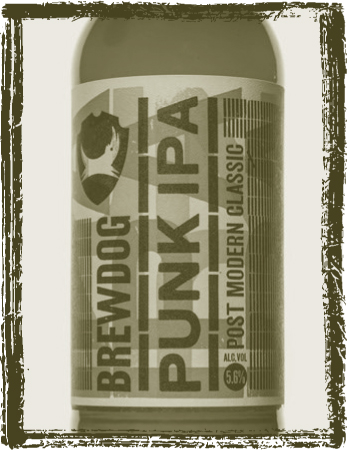
Punk IPA helped introduce Britain to American-style brewing.
Breweries in the U.K. seem a bit at a loss about which direction to turn. This most British of styles has been lost to the country of its birth and is now defined by New World breweries that appropriated the style. Walk into a pub and you might find Greene King’s IPA (the country’s bestseller), a wee slip of a beer at 3.6% ABV, or you might encounter a titan like Thornbridge’s Jaipur IPA. Smaller, newer breweries like Marble, The Kernel, and Dark Star are following America’s lead, but older breweries continue to make IPAs of the traditional weaker school.
The Belgians, too, have gotten in on the act—though in their usual oddball way. Following a visit to the American Northwest in 2005, the brewers at decade-old Urthel decided to try their hand at an IPA that predictably turned out less American and more Flemish by the time they were through with it. This is a trend, with Brasseries d’Achouffe, de la Senne, and de Proef, among others, following suit. And Italy, with a burgeoning craft beer market, has traced its own path, too. They borrow from America and New Zealand in terms of sourcing hops, from England in terms of malts and brewing techniques, and from Belgium in the way they re-ferment their beer in the bottle. Every country seems to use IPA as a blank canvas waiting for a new interpretation.
The style that began as an export to India has spent its life cycle circling the globe. Starting in England, it spread to North America, languished, revived, and now is moving back to Europe—all the while bearing the name of a country where it was never brewed. ■
INDIA PALE ALES are among the most popular styles brewed in the U.S. There are literally hundreds of examples available. The British market is far more constrained, and most cask IPAs are not as accomplished as their American cousins—or even their European counterparts, where breweries have taken up the style with gusto. The beers in the following list demonstrate a range of types on both sides of the Atlantic. But keep in mind that the fresh IPA poured at your local brewpub may be the best in your area.

LOCATION: Kalamazoo, MI
MALT: Undisclosed
HOPS: Centennial
7% ABV, 1.063 SP. GR., 55 IBU
One of the earliest and most important examples of American IPAs. Like West Coast versions, Two Hearted Ale has an effervescent citrus nose, one that softens to caramel sweetness as the beer warms. The flavor, however, is distinctive, with the hops offering an herbal, peppery kick. The malts are creamy and full of caramel, but also have the suggestions of mineral. This evokes British IPAs, placing Bell’s halfway between California and London.

LOCATION: Rehoboth Beach, DE
MALT: Undisclosed
HOPS: Warrior, Amarillo, a “mystery hop”
6% ABV, 60 IBU
A good example of the increasingly popular method of using multiple hop infusions—in this case, throughout the boil. The hopping quality is softer than in traditionally made IPAs, but more saturated; notes of grapefruit and pine have a slightly stewed quality. The process also produces a more balanced beer, and 60 Minute IPA has rounded toffee and brown-sugar malts to complement the hopping.

LOCATION: Middleburg Heights, OH
MALT: Pale, crystal
HOPS: Columbus, Simcoe, Centennial
7.5% ABV, 1.070 SP. GR., 87 IBU
Brewed in the West Coast tradition, Head Hunter has a heavily “dank,” sticky aroma redolent of marijuana. There are some lighter tropical fruit notes in the mix, but they are supporting characters. Crisp and well-attenuated to showcase the hopping.
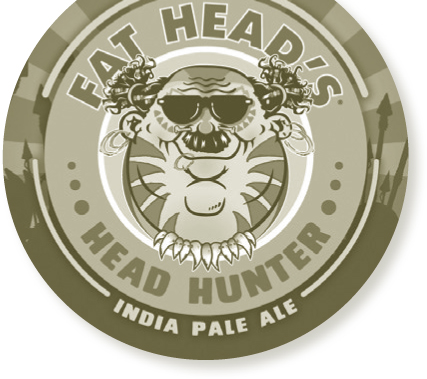

LOCATION: Eugene, OR
MALT: Pale, Munich
HOPS: Summit, Amarillo, Crystal
6.7% ABV, 65 IBU
In its short life (it was founded in 2005), Ninkasi has gone from being the city brewery of Eugene to one of the state’s largest, and it’s thanks to beers like Total Domination, a confection of caramel malts and dense, layered hop flavor. Rarely are beers this hoppy described as “balanced,” but the malt plays a prominent role in supporting the explosion of citrus.

LOCATION: Healdsburg, CA
MALT: Pale, crystal
HOPS: Chinook, Cascade, Columbus, Centennial
7% ABV, 75 IBU
This classic “four C” IPA contains in its nose the familiar grapefruit of its West Coast brethren. But sniff deeper and you’ll find something very close to marijuana. On the tongue, the ganja tastes more like pine tar. Don’t be dissuaded by legal entanglements, though. This is dangerously approachable—its easy drinkability belies its hefty ABV—a layered, classically funky California ale.
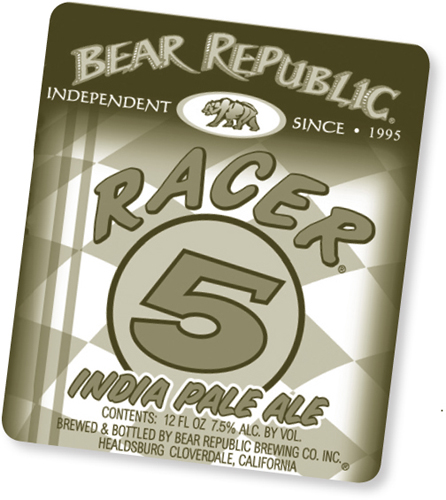

LOCATION: Atlanta, GA
MALT: Pale, Munich, caramel, wheat
HOPS: Chinook, Cascade, Columbus, Simcoe, American Golding
6.3% ABV
Like any style, American-style IPAs have shifted a bit since their inception, and SweetWater’s recalls what the beers were like a decade or two ago. The trend in IPAs is for thinner malt profiles in order to accentuate hop flavor, but SweetWater’s IPA is chewy with malt—more toasty than caramel—and zesty with citrus, like your father’s craft ale.

LOCATION: Dunbar, Scotland
MALT: Pale, caramel
HOPS: Challenger, Cascade
6.1% ABV, 47 IBU
Among the milder British IPAs, Belhaven shows a bit of steel. A bit more robust than standard versions, it is characterized by a wonderful zip to its hopping. With its pale golden color and arctic head, you could mistake it for a pilsner; the touch of diacetyl and caramel flavor, not to mention the surprisingly creamy texture, set you straight. Some malt tannins add to the sharpness of the hops, making this an assertive example.

LOCATION: London, England
MALT: Maris Otter
HOPS: Fuggle, East Kent Golding
7.5% ABV, 70 IBU
Meantime’s IPA may stand as the best example of the difference between the Old World (British style) and the New (American). Although it is a robust beer, it is gentle and well balanced. The body is light and very dry, the hops spicy but not strident. It is an elegant beer, not an aggressive one.

LOCATION: Bakewell, England
MALT: Extra light pale ale, Vienna
HOPS: Ahtanum, Centennial, Chinook, Columbus
5.9% ABV, 50 IBU
Thornbridge evokes the old empire IPAs with this brew’s name—a famous city in India—but the beer itself is purely American in character. It looks American, with its haze of hop particles suspended in a very pale, golden beer, and it smells American, with a fresh-squeezed grapefruit aroma. But mainly, it tastes American, with a freight train of screaming hops that gathers strength the further into the pint you drink. A brash, potent beer from one of England’s leading craft breweries.


LOCATION: Grimstad, Norway
MALT: Maris Otter, Munich, wheat, caramel
HOPS: Cascade, Centennial, Chinook
7.5% ABV, 1.072 SP. GR., 60 IBU
Of the Scandinavian IPAs, Nøgne Ø’s is the most similar to American versions. (The brewery’s name, which means “naked island,” is pronounced something like Noog-ne Oo.) A massive, burly beer that vents alcohol in waves, this is a beer fit for long winters. The body is syrupy and heavy with lees, but they can’t disguise the strength of the hops, which border on the harsh (the Chinooks, which have a rough bitterness). Very strong, very bold—very American.

LOCATION: Achouffe, Belgium
MALT: Pilsner, pale
HOPS: Tomahawk, Saaz, Amarillo
9% ABV
This may be a look into the future of the style—or represent a pleasant culde-sac. Brasserie d’Achouffe has taken elements of IPA and Belgianized them. Like a cubist painting, one can intuit the inspiration without pinpointing it. The result is a sparkling, hoppy, very strong beer with Belgian qualities—peppery yeastiness with massive, rocky carbonation. They even add coriander. Très belge.
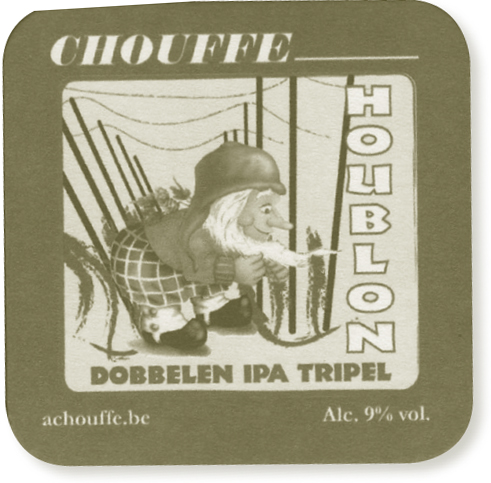
IF YOU WERE ASKED TO CONJURE AN IDEALIZED ENGLISH COUNTRY BREWERY IN YOUR MIND, SOMETHING A ROMANTIC MIGHT DESCRIBE IN A BAD NOVEL, WHAT YOU IMAGINE PROBABLY WOULDN’T BE FAR FROM THE ORIGINAL THORNBRIDGE BREWERY. IT GOT ITS START IN A TWELFTH-CENTURY ESTATE NAMED THORNBRIDGE HALL NEAR THE SILENT, MIST-VEILED FOREST OF DERBYSHIRE’S PEAK DISTRICT. ESTATE BREWERIES ARE AN ANCIENT TRADITION IN ENGLAND, SO FINDING A BREWING KIT IN ONE OF THE ESTATE’S OUTBUILDINGS IS NOT ENTIRELY RADICAL. THE CURIOUS THING ABOUT THE BREWHOUSE, HOWEVER, IS THAT IT IS A MODERN, TWENTY-FIRST-CENTURY ENTERPRISE. AND SINCE IT WAS FOUNDED IN 2004, IT HAS QUICKLY BECOME ONE OF THE MOST LAUDED AND IMPORTANT OF A NEW BREED—THE BRITISH CRAFT BREWERY.
The backstory is just about what you would expect. Jim and Emma Harrison bought Thornbridge Hall in 2002 and, like any new homeowners, started hosting social events there. As Jim brought in casks of ale for these soirées, he started thinking how nice it would be if he could serve his own beer. The homebrewery he installed was Thornbridge Brewery—bigger, perhaps, than the usual personal kit. In fact, it was a commercial-scale, ten-barrel system, and from the start, Jim was interested in producing beer for the local market, not solely for his houseguests.
Given how it started, Harrison’s ambition for his brewery—both commercially and creatively—was breathtaking. Thornbridge produced a range of cask ales, but also experimented with historic revivals, more aggressive American-style beers, and even lagers. One of two inaugural beers was Jaipur IPA, a beer made with American hops at American levels of vivid intensity—the shot heard ’round Britain. Within no time Thornbridge began winning awards, gaining a national reputation, and growing so fast it had to install a new 50-hectoliter brewhouse in nearby Bakewell to handle its spiking volume.
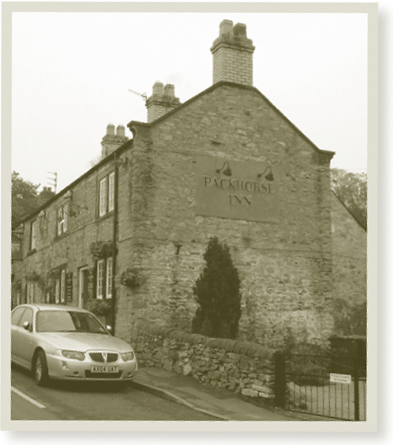
The Packhorse Inn in nearby Little Longstone—one of four pubs the brewery owns
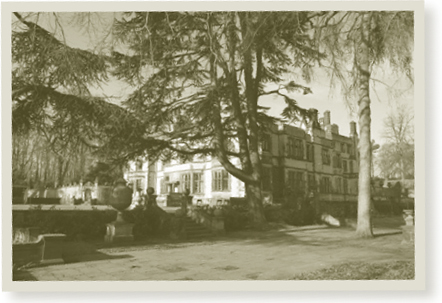
Thornbridge Hall
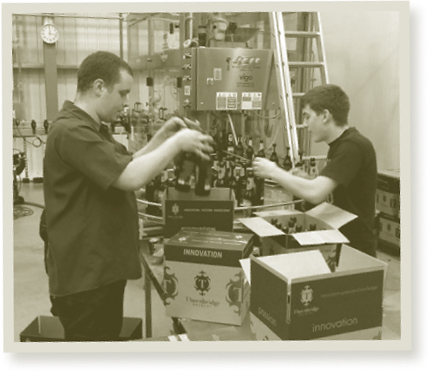
Bottling in the main brewery
For the first time in decades, there is a tangible sense of excitement in the industry. English ale fans have been waging a war against brewery consolidation and the spread of lagers that dates back decades. Consumers were the first to rush to ale’s defense and helped save the local cask brewing tradition. But it has been these recent start-ups, which borrowed a page from American craft brewing, that have sparked a nationwide revival. Craft breweries have generated broad interest in beer, especially among younger drinkers and women—and breweries like Thornbridge are the reason.
The new brewery is a large plant near the Wye River on one of the world’s first industrial sites—a cotton mill from the eighteenth century. It seems an unlikely industrial location—the region is wooded and sparsely populated, and tucked in among the trees. Yet past a bucolic bridge and around some charming buildings, the road emerges into a small clearing with light industrial properties, including Thornbridge. Built in 2009, it looks like a modern American craft brewery, and indeed, when the brewery’s Alex Buchanan gave me a tour, he cited Victory and Odell as inspirations.
About the time we arrived at the brewery’s massive hop back, Buchanan handed the tour off to brewers Caolan Vaughan and Rob Lovatt. Hops are a major part of Thornbridge’s approach, and Vaughan confirmed how much of an influence American beer has had. The brewery had been using an old Yorkshire yeast, but shifted to the Chico strain (Sierra Nevada’s) so common in America. Unlike the fruitier yeasts—or sulfurous ones, in the case of Thornbridge’s old strain—Chico is mostly neutral. It allows hop aromas and flavors to pop, just like Thornbridge prefers.
But here’s where Thornbridge departs from the path of American breweries. Even though hoppy beers are its central claim to fame, Thornbridge is at heart a British brewery. Well-balanced cask ales still make up more than half its production. Lord Marples, named for industrialist George Marples who once owned Thornbridge Hall (and who was never an actual lord), is the classic 4% ABV bitter the brewery released when it opened. Kipling, made with hops from the South Pacific, is a slightly souped-up 5.2%, while Wild Swan is an absolutely lush wheat-softened ale of 3.5%.
And Thornbridge is heading in the other direction, too—back to traditional brewing from earlier centuries. The original ten-barrel Thornbridge Hall brewery seems to inspire these experiments in antiquity. When I visited, another brewer, Matt Clark, was working on a re-creation of nineteenth-century imperial stouts. Not only did the conditioning include Brettanomyces, but brewers added salt to enhance mouthfeel, just like some old breweries had done. Another of the “Hall” range (the specialty beers brewed on the small system) is Bracia, a heavy, dark ale, made with chestnut honey, that was ripening in the barrel when I visited. As craft brewing gains more currency, beer geeks clamor for beers from the British archives—and breweries like Thornbridge are happy to oblige.
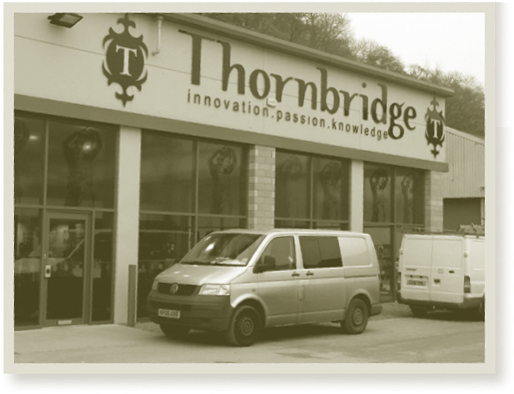
The new, modern Thornbridge Brewery
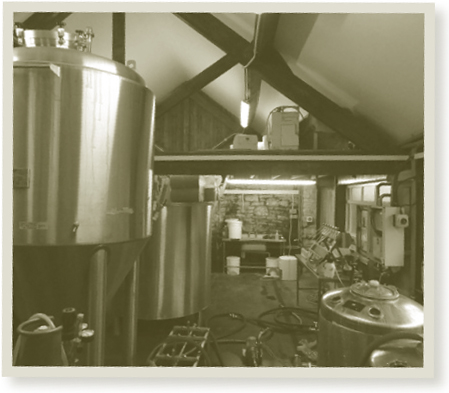
Inside the low, raftered building that houses Thornbridge Hall Brewery
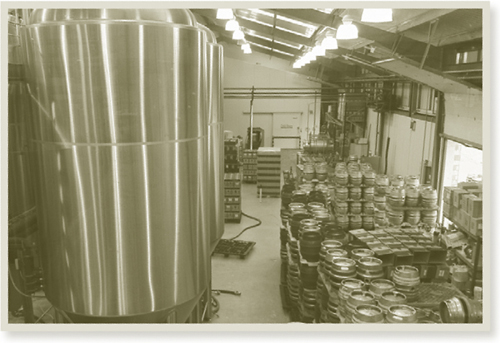
What the new production brewery lacks in romance, it makes up for in technical precision.
It is this intersection of past, present, and future that makes craft brewing different in Britain. National expectation exerts some limits on what breweries can do, but those expectations also create opportunity. For decades in Britain, the institution of cask ale has been defended by the Campaign for Real Ale (CAMRA), which has a rigid definition of what “British ale” means—one Thornbridge is gently pushing further and further away from milds and bitters. “We’re moving away from just cask because we don’t want to be seen or known as a cask brewery; we want to be known as a craft ale brewery,” Vaughan told me.
The definition of “craft” is a moving target in Great Britain. Everyone agrees that it means “new,” but beyond that, proponents are vague. Craft brewing means a departure from hidebound tradition but not a rebuke of it. It means a return to character and craft, but also experimentation. And it means a willingness to embrace strange and exotic flavors and styles, even when those styles are ones the British abandoned decades ago. To see where craft brewing is headed in England, keep an eye on Thornbridge.